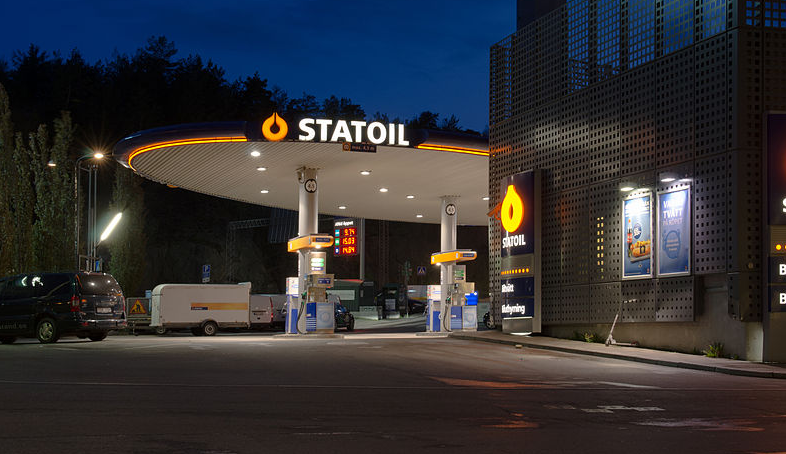The deal will allow Statoil to increase its stake in Wisting deposit up to 35% of the shares. Oil reserves in the field, developed by Austrian OMV, are estimated at 241 million barrels of oil equivalent.
The field is located in the Hoop area in the Arctic more than 300 kilometers north of Hammerfest on the northern tip of the Norwegian mainland. The transaction value was not disclosed.
According to Statoil, 67% owned by the Norwegian state, the transaction will increase the company's share of a license in another field in Hoop area from 35% to 55%. Besides, the Norwegians are expecting to raise their share in another license to develop a field in the southern part of the Barents Sea, along with an increase in share of a license in the Norwegian sea.
Earlier, Statoil announced an increase in proportion of five licenses in the Barents Sea. The agreements were concluded with DEA, OMV, ConocoPhillips and offshore company Point Resources. Statoil is planning a major exploration campaign in the Barents Sea in the next year to increase oil production.
Statoil stressed that significant discoveries are needed to maintain production on the Norwegian continental shelf. Replenishment of resources due to mining in the north of Norway will help achieve this goal.
At this point, 16 companies are searching a common solution for exploration works in the Barents Sea. Such cooperation can ensure cost-effectiveness and compliance with all safety standards.
The Norwegian shelf is the basis for Statoil’s activities, so the company expects to at least maintain production at current levels until 2025.
Earlier it was reported that the Norwegian oil producer is planning to cut spending in first development phase on Johan Sverdrup field. In monetary terms, the investment will fall from 123 billion to 99 billion Norwegian kroner ($ 11.96 billion). Total cost, including the second phase of investment and expansion of production capacity, was downgraded from previously planned 170-220 billion kroner to 140-170 billion crowns.
According to Statoil’s experts, the project will be profitable even the oil prices fall below $ 25 per barrel, whereas previously it was thought that the project would be profitable at oil prices below $ 30 per barrel.
It is expected that volume of production from the field in the North Sea will amount to 440 thousand barrels per day in the first development phase, although earlier it was planned to produce 315 to 380 th. barrels per day, according to Statoil.
In total, the first phase is planned to produce 1.9 billion to 3 billion barrels of oil equivalent.
According to Statoil’s Executive Director Eldar Saetre, the company is greatly reducing investment and increasing output and resource base of Johan Sverdrup, which is undoubtedly a good source of oil and gas mineral resources.
source: marketwatch.com
The field is located in the Hoop area in the Arctic more than 300 kilometers north of Hammerfest on the northern tip of the Norwegian mainland. The transaction value was not disclosed.
According to Statoil, 67% owned by the Norwegian state, the transaction will increase the company's share of a license in another field in Hoop area from 35% to 55%. Besides, the Norwegians are expecting to raise their share in another license to develop a field in the southern part of the Barents Sea, along with an increase in share of a license in the Norwegian sea.
Earlier, Statoil announced an increase in proportion of five licenses in the Barents Sea. The agreements were concluded with DEA, OMV, ConocoPhillips and offshore company Point Resources. Statoil is planning a major exploration campaign in the Barents Sea in the next year to increase oil production.
Statoil stressed that significant discoveries are needed to maintain production on the Norwegian continental shelf. Replenishment of resources due to mining in the north of Norway will help achieve this goal.
At this point, 16 companies are searching a common solution for exploration works in the Barents Sea. Such cooperation can ensure cost-effectiveness and compliance with all safety standards.
The Norwegian shelf is the basis for Statoil’s activities, so the company expects to at least maintain production at current levels until 2025.
Earlier it was reported that the Norwegian oil producer is planning to cut spending in first development phase on Johan Sverdrup field. In monetary terms, the investment will fall from 123 billion to 99 billion Norwegian kroner ($ 11.96 billion). Total cost, including the second phase of investment and expansion of production capacity, was downgraded from previously planned 170-220 billion kroner to 140-170 billion crowns.
According to Statoil’s experts, the project will be profitable even the oil prices fall below $ 25 per barrel, whereas previously it was thought that the project would be profitable at oil prices below $ 30 per barrel.
It is expected that volume of production from the field in the North Sea will amount to 440 thousand barrels per day in the first development phase, although earlier it was planned to produce 315 to 380 th. barrels per day, according to Statoil.
In total, the first phase is planned to produce 1.9 billion to 3 billion barrels of oil equivalent.
According to Statoil’s Executive Director Eldar Saetre, the company is greatly reducing investment and increasing output and resource base of Johan Sverdrup, which is undoubtedly a good source of oil and gas mineral resources.
source: marketwatch.com





